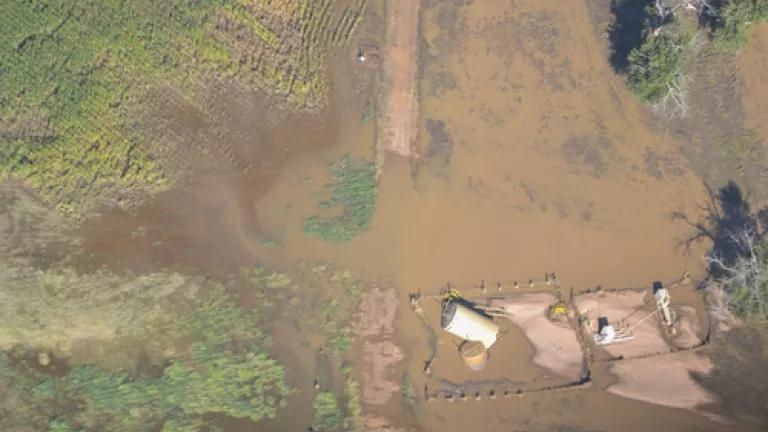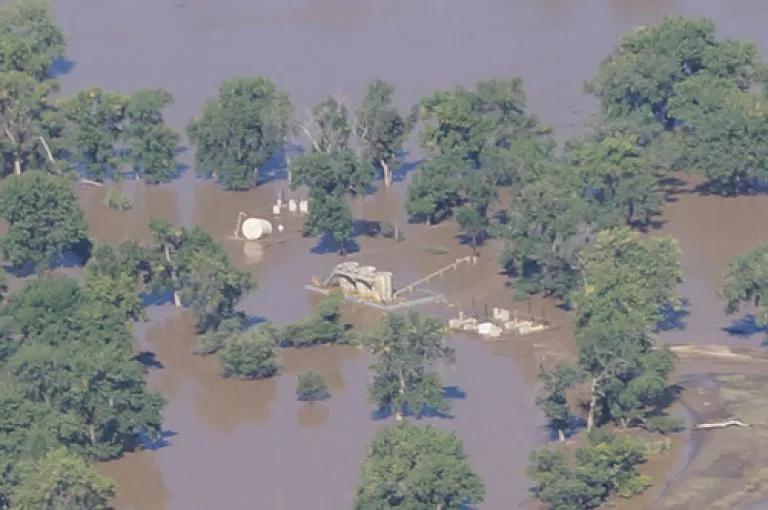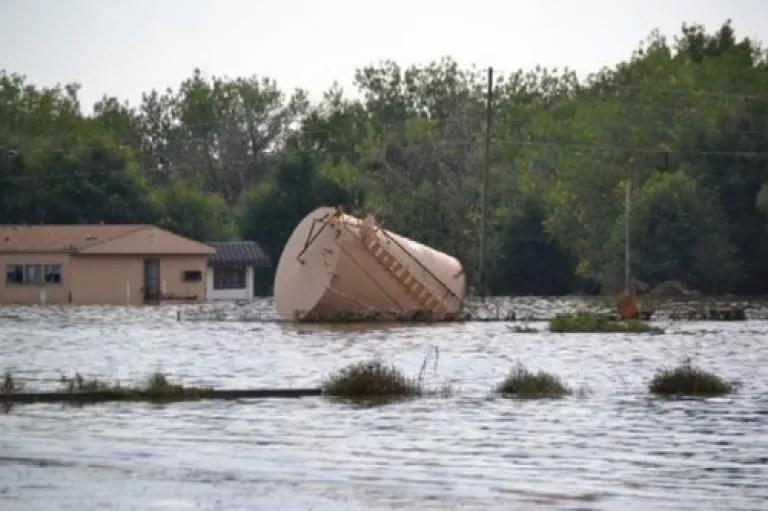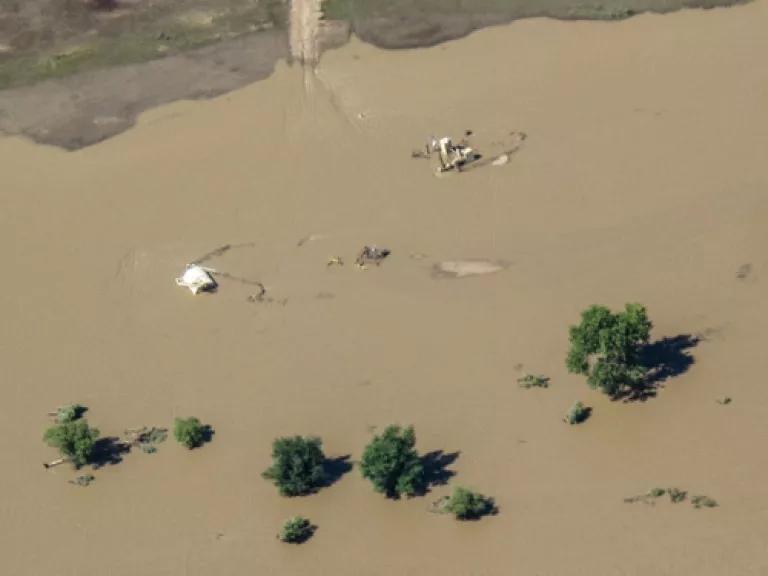
The Colorado disaster is tragic; lives, homes, and more have been lost. Even today, people are still being evacuated by helicopter rescue crews because there is no other way to reach them. Some people may not be able to return to their homes for months due to destruction of roads and basic infrastructure. I used to live in Boulder and have been worried about friends and their homes. Like others, I have been glued to images of the destruction and waiting for word about those stranded by the floodwaters.
There are many terrible impacts of this flood. This blog post focuses on only one--the status of oil and gas sites--but in no way is meant to minimize the long list of victims and suffering that has occurred.
Local citizens have been rightfully concerned about the flood’s impacts on oil and gas production sites, with so many located near homes. Wellpads are home to tanks, pits, pipelines, and other equipment that can harbor toxic substances and be damaged by a flood. Citizen photos and reports of flooded wellpads and floating tanks have led to media coverage. The Denver Post reported that “Thousands of wells and operating sites have been affected” –some sitting in high water and some being battered by rushing water. I've posted photos below to illustrate the risks.
Photo used with permission, credit: Jane Pargiter, EcoFlight
Of immediate concern are potentially hazardous floodwaters, which people should avoid. Floodwaters can carry a range of dangerous substances, including raw sewage as well as industrial chemicals. After the waters recede, the soil can remain contaminated. Contaminated water and sediments can present public health risks, and regulators will need to find where there may be significant pollutants and where they are heading, starting with mapping the sites that might be the source of contamination.

Photo used with permission, credit: Jane Pargiter, EcoFlight
Since many of these wellpads are in agricultural areas, there are risks for farmers, crops, and livestock. It has been reported that most producing wells in the area were "shut in." Shutting in a producing well reduces risk by ensuring that oil or gas stops flowing out of the well and into gathering lines, tanks, and other equipment. However, there may still be oil, gas, or toxic wastewater that entered the system above ground before the well was shut in.
No one predicted the catastrophic floods that have pummeled Colorado and, even with stronger rules, oil and gas sites would have still been overwhelmed by the force of the flood that was powerful enough to destroy roads, homes, and small towns.

Photo used with permission, credit: Carl Erickson
But Colorado oil and gas rules could do more to keep industrial oil and gas sites far away from rivers and streams or out of floodplains, and minimize damages that occur from floods. Colorado rules have buffers for “public water system supply areas,” but those are very narrowly defined and don’t include most miles of Colorado’s rivers, creeks, and streams. For example, according to a map on the COGCC website, this rule doesn’t protect any Colorado waterways on the front range east of the mountains from Fort Collins to Colorado Springs. When the Colorado Oil and Gas Conservation Commission established the new buffers in 2008, it said it would also devise buffers for other waterways, but that never happened. In addition, Colorado rules do not ban all open air pits.
The result is a lot of oil and gas waste, condensate and other liquids, other associated oil and gas materials in harm's way and at risk of contaminating already troublesome floodwaters with dangerous substances.
Not every flood is, as this one has been called, a “thousand year flood” (meaning the statistical chances of it happening are one every 1,000 years). But a flood doesn’t have to be as devastating as this one to topple oil and gas tanks or cause oil and gas waste pits to overflow. Floods of lesser proportions happen more often. The rules for oil and gas production need to be strong enough to protect streams, rivers, soil and communities as much as possible.
Our prayers and best wishes go out to the victims of this flood. Anyone who would like to donate to help can find reputable charities that are helping victims at HelpColoradoNow.

Photo used with permission, credit: Jane Pargiter, EcoFlight

